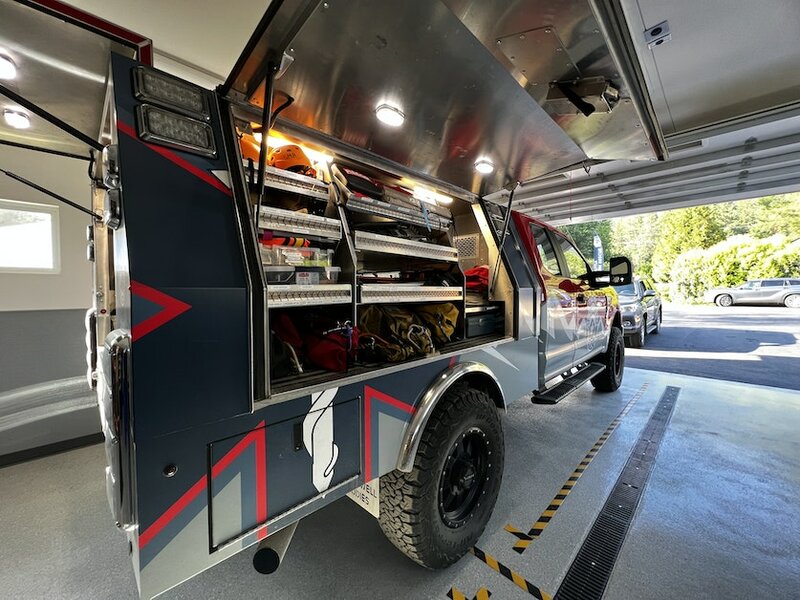For 75 years, Seattle Mountain Rescue has relied on a constellation of volunteers and a mixed bag of resources to help lost hikers and injured adventurers. As King County has exponentially grown, the demand for Mountain Rescue services has too.
Now, for the first time, the nonprofit will have a base of operations in North Bend.
On a summer evening beneath Mount Si, Seattle Mountain Rescue (SMR) is getting ready to celebrate their 75th anniversary when a call comes in. A crew needs to head up to Mount Rainier to help with a search and rescue mission.
"It's really fun and exciting to have it all come together," says Garth Bruce, a volunteer with the rescue group for the last 30 years. "But of course, there's the chaos of the missions in-between."
Bruce's phone gives a constant ping as he darts between equipment trucks and a nearby barbeque. Since its inception in the 1940s, Seattle Mountain Rescue has never had a home base. That meant parking their two emergency trucks in different parking lots throughout North Bend. When a call came in for a rescue, volunteers were sent scrambling.



 North Bend
North Bend


